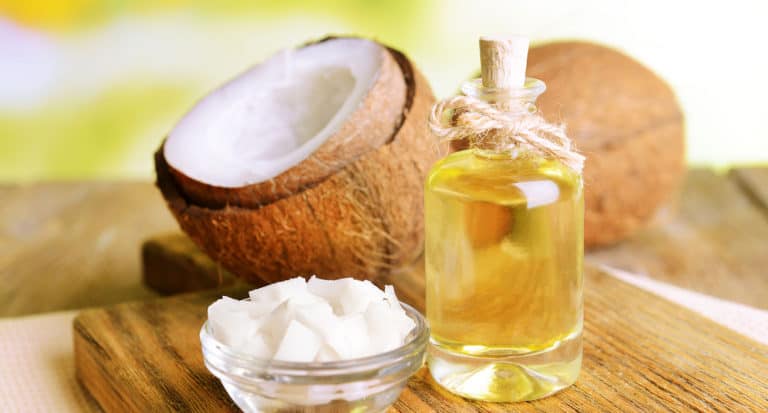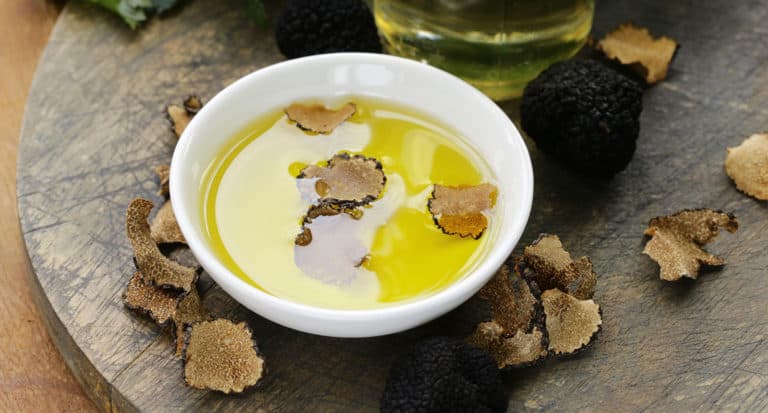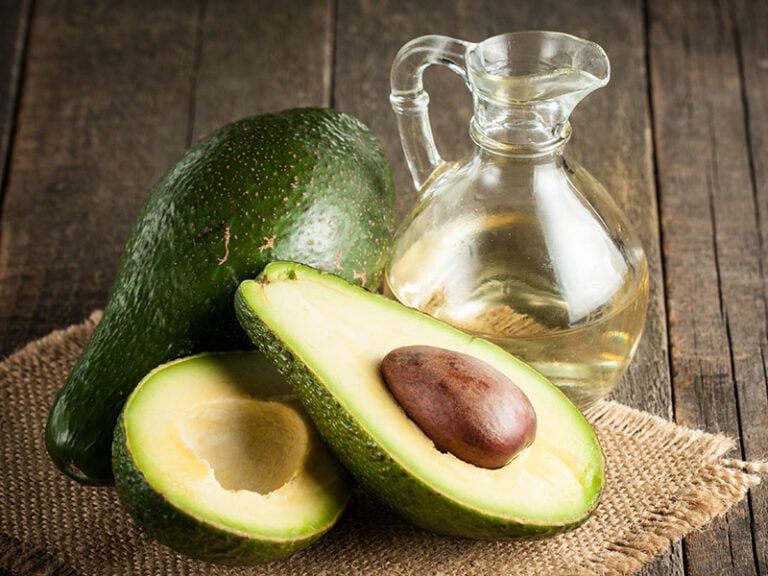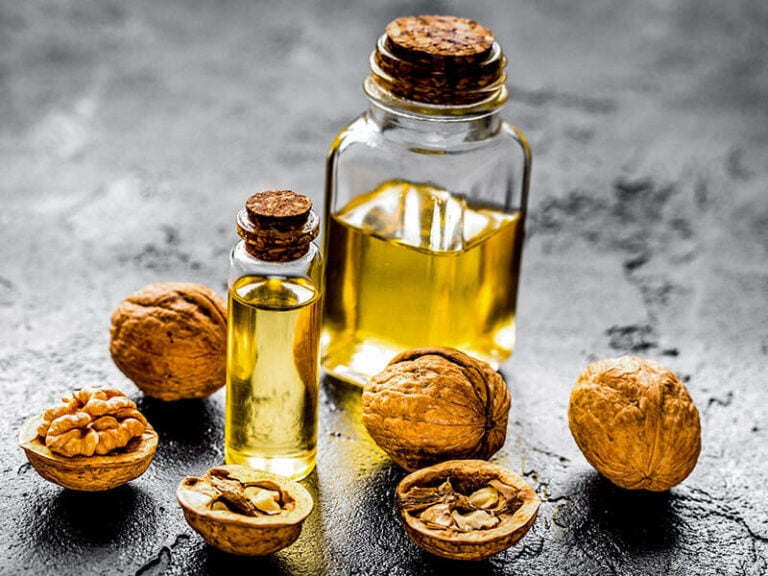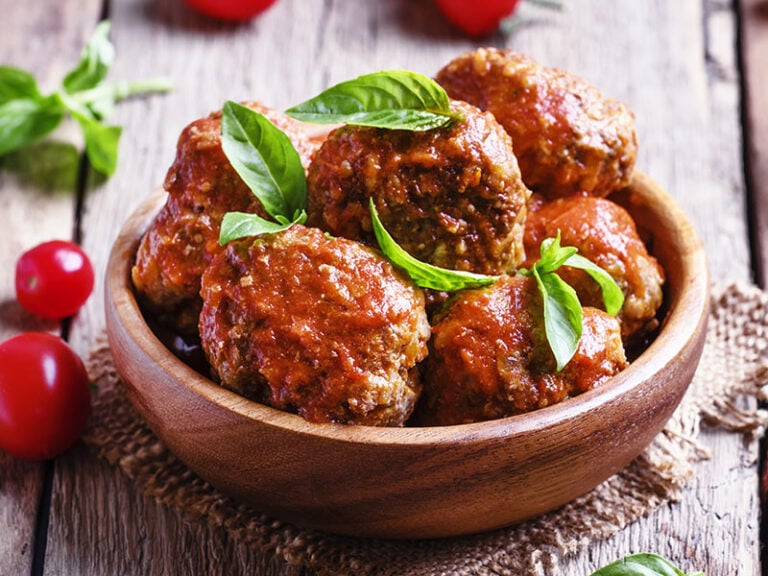Have you ever tried to look for the best oils for cooking steak, but your search often ends up as a huge disappointment? When it comes to this matter, there are many factors to take into consideration and even more brands to choose from. This myriad of choices can confuse anyone.
Don’t worry! I am here to help. This article will take you through the best oils to use for cooking steak. Spend a few minutes reading it, and you will know what are the most recommended oils to cook flavorful, juicy, and tender steak to indulge your taste buds.
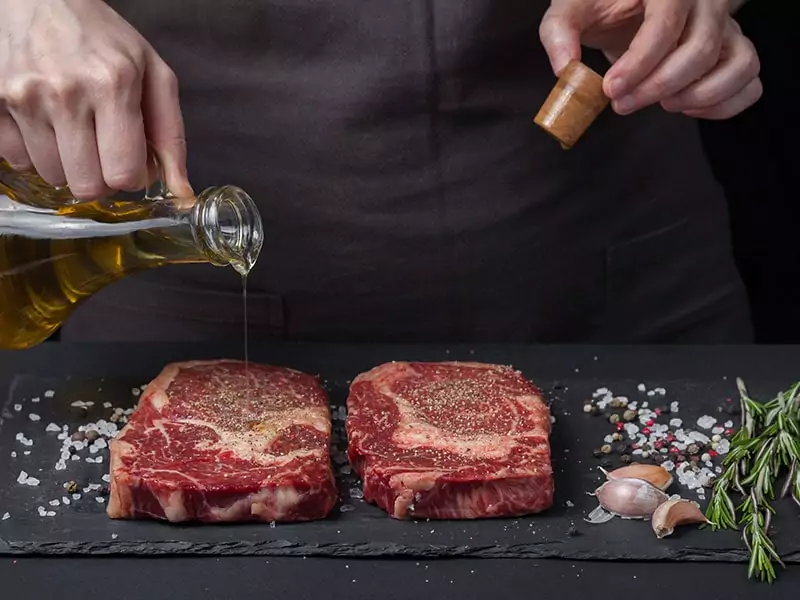
Why You Should Cook Steak With Oil
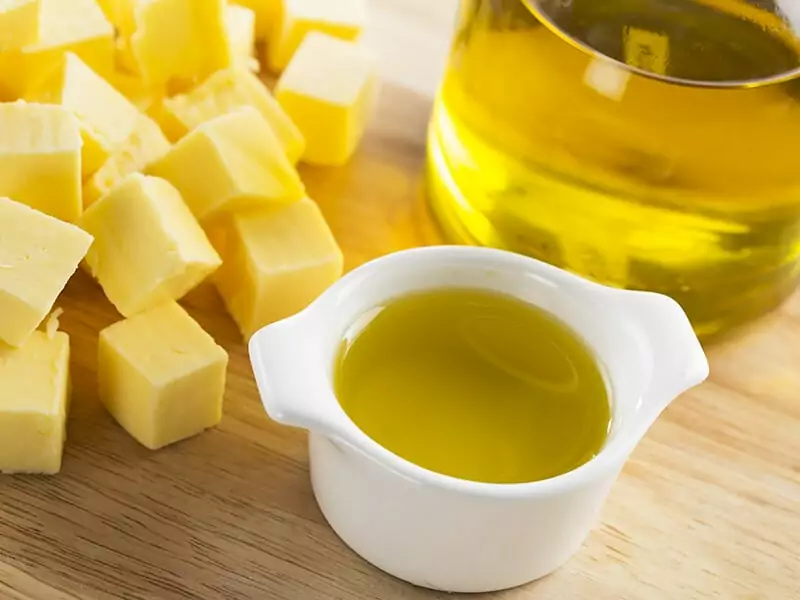
While oil is a very common choice for cooking, many people may go with butter as an alternative. So, you may think that this is not a big deal and cook your steak with whatever you like. But I have to say that you are totally wrong!
Butter is used in various recipes due to its rich flavor and creamy taste. It also goes well with meat, fish, vegetables, and other ingredients. In some cases, you can cook steak with butter to turn it into a deep brown color as well.
However, this dairy product begins to burn and smoke at around 350°F (177°C). This means the butter will be burnt easily before your steak is done cooking. In addition, its dark color also makes your steak unappealing to eat, while its bitterness is likely to ruin the taste of your meal.
Oil, by contrast, often works well at a higher temperature. This makes it a better choice than butter for cooking steak as well as other recipes requiring high heat.
3 Factors To Consider When Choosing Oils
Now, you know that oil is the way to go for cooking steak. But what oils should you choose exactly? Well, there are 3 criteria that you should consider before buying any type.
Smoke Point
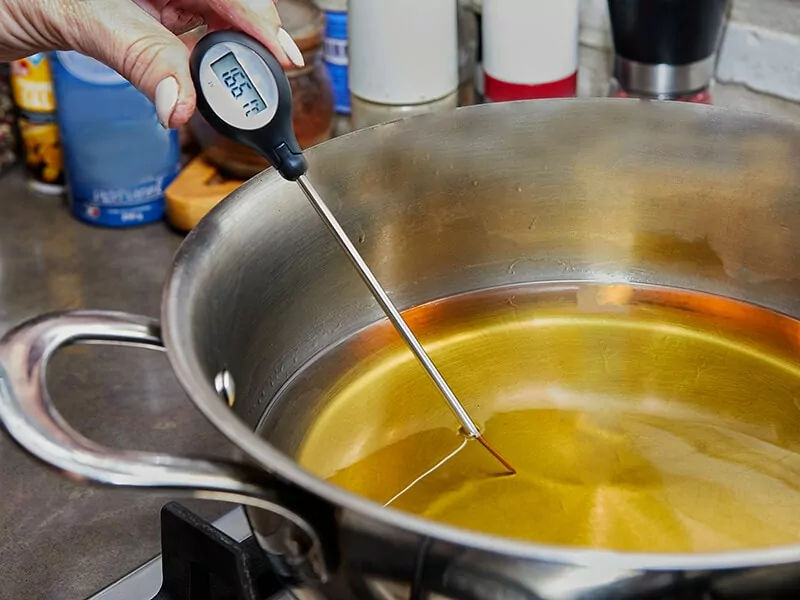
The smoke point is the first thing you need to keep in mind. The smoke point (also called the burning point) refers to the temperature when the oil or fat begins to smoke (1).
To cook a perfect steak, you need to provide it with high heat and a lot of time. Most steak recipes recommend cooking it at 400 – 450°F for 3 – 6 minutes, depending on the type of steak. Otherwise, your streak will end up being undercooked.
Cooking steak with low-smoke point oils may also lead to several health issues. When the oils pass their smoke points, they begin to produce toxins and free radicals. These compounds damage cells, leading to cancer and many chronic diseases.
For this reason, when selecting oils for cooking steak, you should choose only the ones with high smoke points. Such oil kinds allow you to ensure producing enough temperature for your steak without being burnt quickly.
Flavors
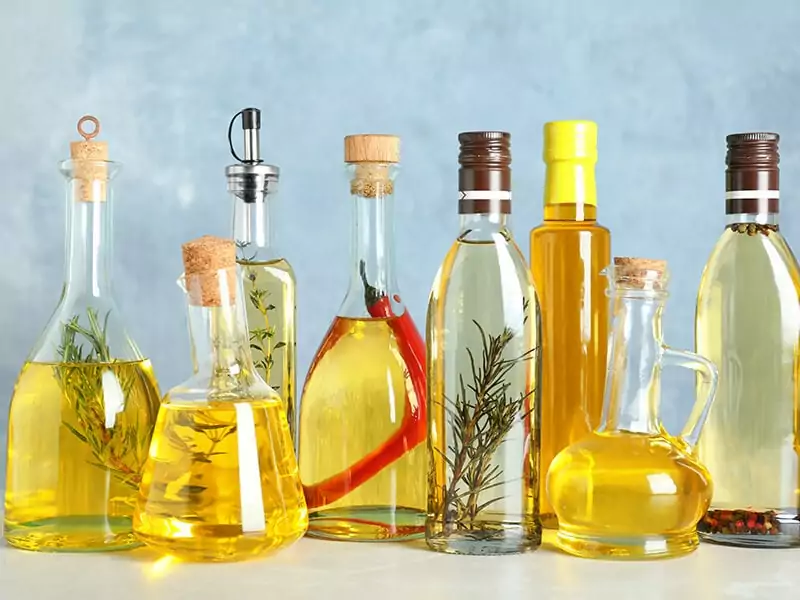
Another decisive factor is the flavors of oils. Different types of oils can come in various flavors, which may or may not combine well with the general flavor of steak.
While the flavor of steak may vary in various recipes, it is often meaty and juicy. Using intensely flavorful oils, such as sesame oil (savory and nutty) or flaxseed oil (bitter and nutty), can lead to undesirable or unappealing steak flavors.
That’s why you should always research the flavors of certain oils carefully before cooking. By doing so, you can consider what oils will go well with ingredients in your steak recipes.
If you do not want oils to greatly impact the taste of your steak, you can go with ones having a neutral or subtle flavor.
Price

Like other products, you should not overlook the prices of oils. You do not want to burn tons of money for a meal, don’t you? If you have a small budget, buying expensive kinds may make you run into some trouble.
Although some high-quality and good flavor oils can be kind of pricey, not all of them are unaffordable. To cook a perfect steak, you don’t have to stretch your budget; Instead, choose the most suitable for your case.
So, to make sure the oils serve your needs well, check their prices and consider them carefully before throwing them into a cart.
The Best Oil Brands To Choose From
Due to the numerous oil brands on the market, it can be quite challenging for you to choose the good ones. Don’t worry! I covered some of the best brands at the moment.
Pompeian
Starting as a small business in Italy in the 1900s, Pompeian is now in an alliance with the DCOOP Group of Spain, the world’s largest olive oil producer.
Their products have never failed the strict requirements of the U.S. Department of Agriculture and the North American Olive Oil Association Quality Seal Programs.
La Tourangelle
La Tourangelle is a family-owned business that is passionate about traditional French methods. Here is their philosophy: the traditional approach is the best way to retain the flavors of natural products.
Besides producing high-quality oils, they also use eco-friendly packaging materials and renewable energy to reduce their environmental impact.
Wesson
Established in the 1900s, Wesson has a long history and experience in producing oil. After Richardson International purchased the company in 2019, Pure Wesson became their keystone product line.
Their mission is to make their oil products, such as vegetable, canola, and corn oils, become a necessary part of every household and restaurant. Their products are consumed in over 50 countries in the world.
Healthy Harvest
Cooperating with farms in Italy, Greece, and Spain, Healthy Harvest manufactures oils with a fresh flavor and health benefits. Instead of grocery stores, they sell their products at local markets, in retailers, and online.
They support the planet by using recycled or reused materials. Their customers can also return glass bottles to help the brand reuse them for future products and reduce waste.
The Best Oils And Recommendations For Cooking Steak
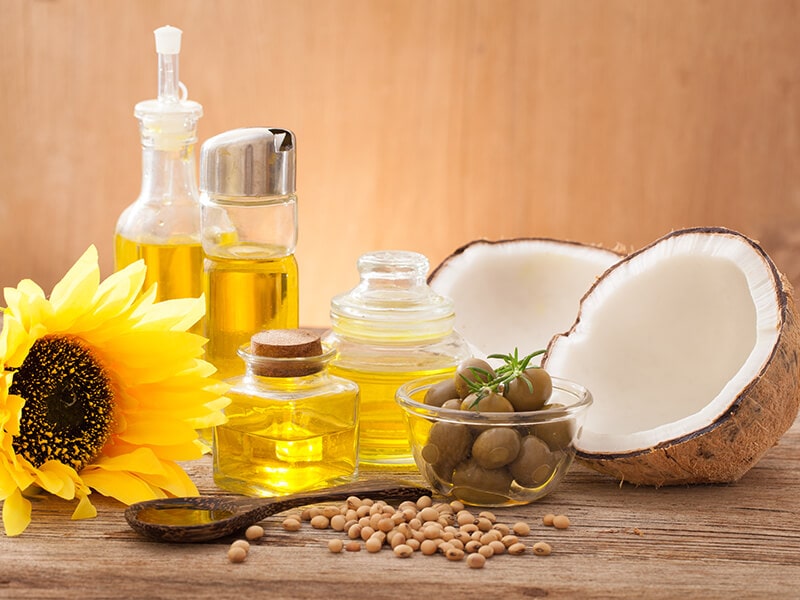
After identifying the best brands to buy from, the next step is to look at the best oils for cooking steak. Below is a brief summary of the best oils you should use for cooking steak.
1. Avocado Oil
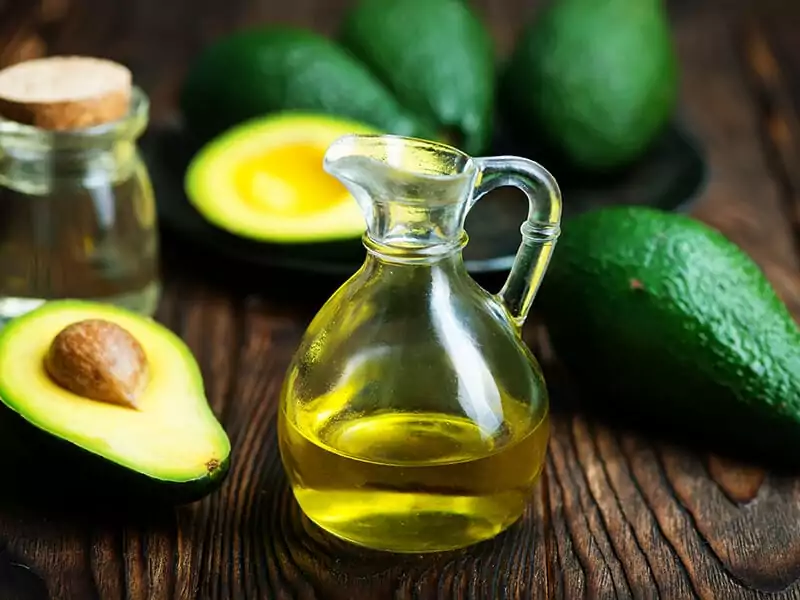
While most oils are often made from seeds of plants, avocado oil is produced by extracting from avocado fruits. The flavor of this oil may vary from region and region where the fruits are harvested from. But, overall, it tends to have a slightly nutty flavor.
There are two types of avocado oil. Unrefined avocado oil has a smoke point of 480°F (249°C), whereas that of refined avocado oil is slightly higher, at 520°F (271°C).
Although both of them come with impressive smoke points, refined avocado oil has a slighter flavor and brighter color than its unrefined counterpart. This makes refined avocado oil a better choice for cooking steak.
The downside of avocado oil is the price. Because this oil is produced in small amounts, it tends to be pricey compared to other oils.
Besides, many avocado oil products on the market are not pure. They are either combined with rancid avocado oil or other oils such as soybean oil. However, there are some products that are 100% avocado oil, such as La Tourangelle Avocado Oil.
The ideal condition for storing avocado oil is a cool and dark cupboard. While it does not require to be kept in a fridge, doing so will help your avocado last longer. An unused bottle of avocado oil can last for a year. But once you open it, you should keep it in a fridge and use it for 6 – 8 months.
2. Safflower Oil
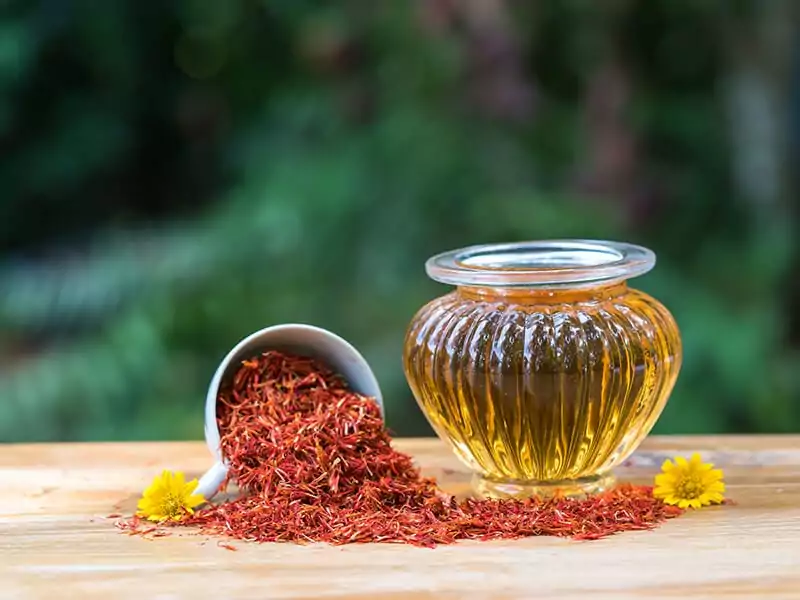
This oil is made from the seeds of the safflower, a cousin of the sunflower. In the past, safflowers were used as dye materials, but these days people press the seeds to produce oil. Apart from cooking, this type of oil is very common in dressings and beauty products.
There are two types of safflower oil. The first one is high-oleic safflower oil which is rich in monounsaturated fats. Another is high-linoleic safflower oil with a large content of polyunsaturated fats.
Of the two varieties, the former is more popular and is often used for high-heat cooking, while the latter is suitable for uncooked food.
The shelf life of each type is also different. The high-oleic safflower can last for 6 months if you store it in a cool and dark cupboard. The high-linoleic safflower oil, by contrast, needs to be kept in a fridge because its polyunsaturated content makes it less stable.
When it comes to the smoke point, safflower oil has a very impressive figure: 510°F (265°C). For example, a bottle of Hollywood Safflower Oil with a high smoke point will go well with many dishes that require high heat, including steak.
Safflower oil is also easy to cook with other ingredients due to its very neutral flavor. Another thing that makes you love this oil is its affordable cost. If you need a good oil for cooking but are kind of broke at the moment, you can’t go wrong with safflower oil.
3. Olive Oil

Another great choice for cooking steak is olive oil. There are several kinds categorized according to their production methods and acid levels. However, the one I’m talking about is light/ refined olive oil. Its smoke point ranges from 390 to 470°F (198 – 243°C).
This oil surprisingly has a long history dating back thousands of years ago in the Mediterranean Basin or the Middle East. It is produced by grinding and pressing olive fruits. Due to its labor-intensive production process, olive oil tends to come at high prices.
Olive oil has fresh herbal and fruity flavors. As a result, some may love using a bottle of olive oil, like Pompeian Light Taste Olive Oil, to enhance the taste of steak. But some may not like the flavor of olive oil and leave it out.
Apart from using for cooking purposes, this healthy oil is an important ingredient in making medicines, cosmetics, and soaps.
Olive oil has a very long shelf life. It can last for up to 2 years if you store it properly. To make sure your olive oil is in good condition, you should keep it out of sunlight to prevent your oil from becoming rancid.
The journey of olive oil from farm to factory.
4. Peanut Oil
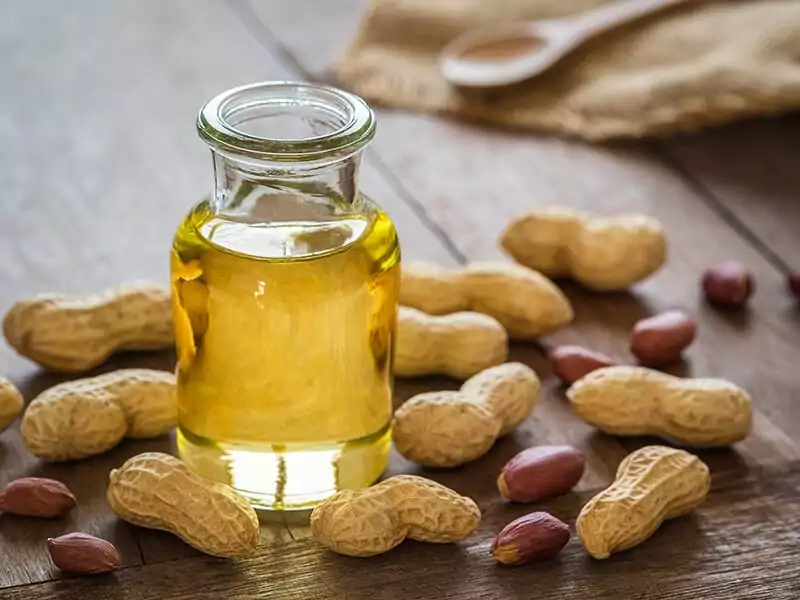
Peanut oil, also known as groundnut oil or Arachis oil, is made from the seeds of peanut plants.
Normally, peanut oil has a light and neutral flavor, so you do not need to worry about changes in the food taste. However, for the oil made from roasted peanuts, you may want to add it after cooking because of its stronger flavor.
While this is not as affordable as others, peanut oil is an amazing choice for cooking steak due to its high smoke point of 450°F (232°C).
Because peanut allergy is one of the most common food allergies, many people may have the same worry about peanut oil. However, it is safe to use if you choose the right one: refined peanut oil.
As the FDA stated, highly refined peanut oil should not be labeled as an allergen (2). This is because the allergic food proteins are removed through processing. An example of this is Spectrum Naturals Refined Organic Peanut Oil, which is safe for people with peanut allergies.
Unrefined peanut oil like La Tourangelle Roasted Peanut Oil, by contrast, contains a small number of allergic food proteins. So, you may want to avoid it if you are allergic to peanuts. Otherwise, it is an excellent choice for most cases.
5. Corn Oil
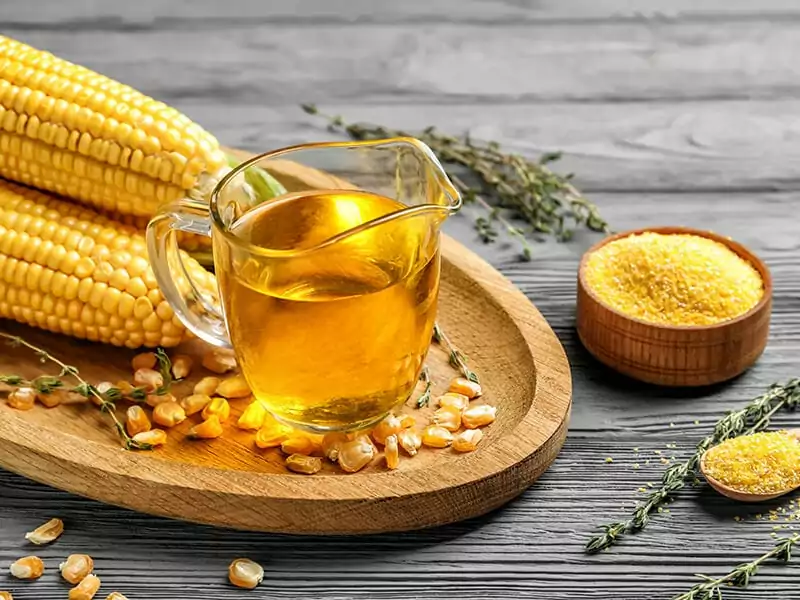
Another low-cost option for cooking steak is corn oil (also known as maize oil). It is extracted from dried and softened corn kernels.
For high-heat cooking, it is one of the best. It has the same smoke point as peanut oil, at 450°F (232°C). This means corn oil will not smoke easily while cooking steak. While they are equal in terms of the smoke point, the price of corn oil is more affordable.
Another good point about corn oil is its neutral flavor. This is because the production of corn oil includes many processes to remove flavorful compounds. For instance, using Mazola Corn Oil for cooking will not cause any changes in the taste of your meal.
Besides cooking, corn oil is commonly used for a variety of purposes due to its cheap costs and neutral flavor. You can use it to make salad dressings, margarine, and sauces. Or you may find it in beauty products and soaps. Sometimes, it is also used as a massage oil.
Some oils do not require refrigeration to preserve them, but that’s not the case for corn oil. Due to its high polyunsaturated fat amount, you should store it in a fridge to keep them for longer.
6. Vegetable Oil
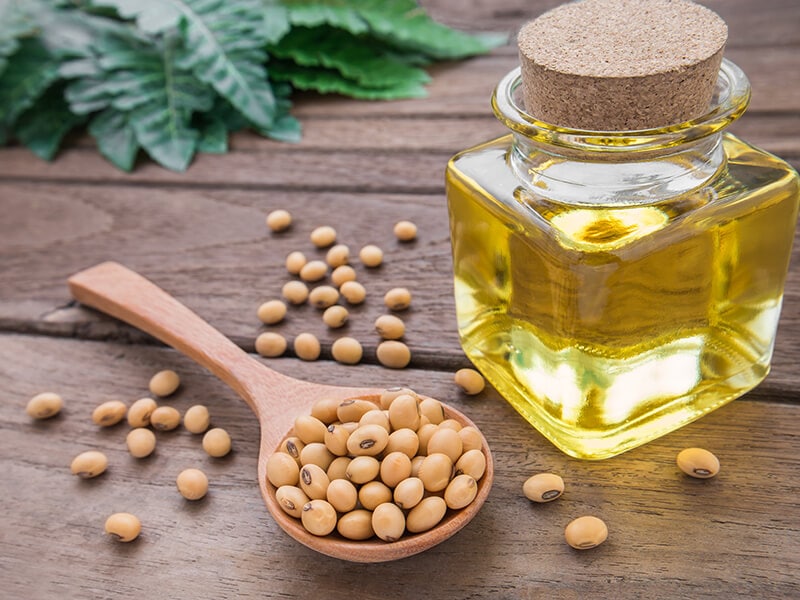
Generally, vegetable oil is often used as a category that includes any oils made from seeds, flowers, or other parts of plants. By definition, safflower oil, sunflower oil, olive oil, canola oil, and more are all considered vegetable oil.
But when it comes to a certain oil, vegetable oil is the oil extracted from the seeds of the soybean plant. For this reason, it is also called soybean oil. But vegetable oil can also be a mixture of this and corn oil, palm oil, sunflower oil, and more.
Vegetable oil also has a high smoke point of 400-450°F (205-232°C). This makes it a popular choice for cooking meals that require high temperatures. Since this oil comes with a neutral flavor, you can use it in various recipes without worrying about affecting the flavor of your foods.
Vegetable oil products, such as Wesson Pure Vegetable Oil, tend to come at very affordable prices. That’s why among other vegetable oils, this is the second most popular one. The best place to keep it is a cool cupboard and out of sunlight. It can last for about 6 months if stored properly.
7. Sunflower Oil

Sunflower oil is another candidate for your steak. Many people may think that flowers are the main ingredient of this oil. But the truth is that sunflower oil is sourced from the seeds.
It is often used in baking and making salads. However, the smoke point of 440°F (225°C) makes it ideal for cooking steak as well. Besides the ability to bear high heat, sunflower oil also retains the taste of your meal thanks to its neutral flavor.
Unlike avocado oil or olive oil, sunflower oil, such as Healthy Harvest Sunflower Oil, tends to come at reasonable prices. Therefore, you don’t need to worry about stretching your budget for a good steak. If budget is your priority, this is the way to go.
Sunflower oil is not only good for preparing food but also has beauty benefits. Rich in antioxidants, nutrients, and fatty acids, this oil may help soften your hair and prevent hair breakage.
Similar to other oils, you should keep sunflower oils in a fridge after opening. A cool and dark place is recommended to help it last for about 6 months.
8. Grapeseed Oil
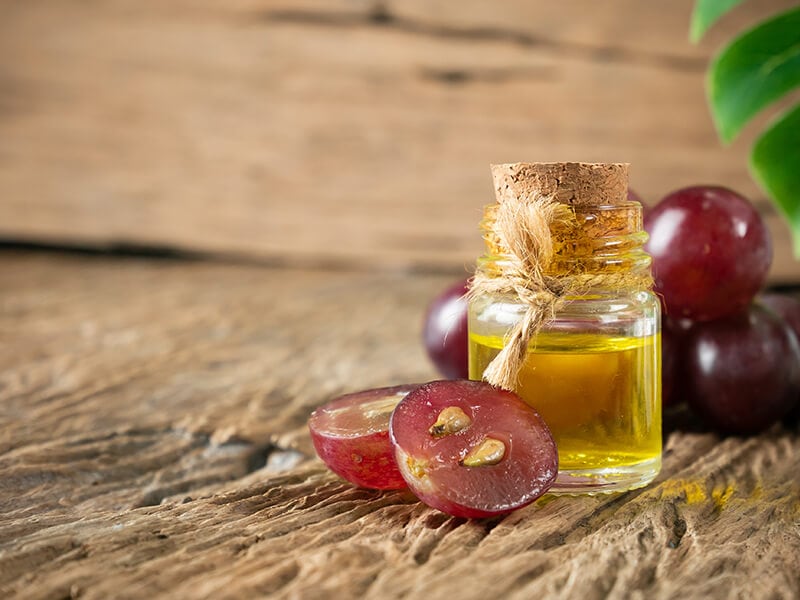
Unlike other oils, its production method is quite special. This oil is made from leftover grape seeds after the winemaking process. In the past, these seeds were often thrown away to keep them from impacting the taste of wine. But now, they are the core ingredient in grapeseed oil.
For this reason, you may think grapeseed oil is slightly bitter or wine-like, but actually, it does have a light and neutral flavor. Having said that, using it in your cooking will not lead to any additional foreign flavor. Its expensive cost, however, is a downside you should consider.
Grapeseed oil also has a good smoke point of 420°F (215°C), which makes it work well in high-heat cooking such as deep-frying and stir-frying. A high-quality bottle of Pompeian 100% Grapeseed Oil would be a perfect choice for this purpose.
Another way to use grapeseed oil is to apply it to your face and body. Doing this can make your skin lighten and soften. You can even combine it with other oils to enhance its effectiveness.
Finally, although grape allergy is not very common, some people may suffer from it. So, if you have any problem related to grapes or grape seeds, always ask for advice from your doctor before using this oil.
Find out the benefits that grapeseed oil brings about to your skin.
9. Canola Oil
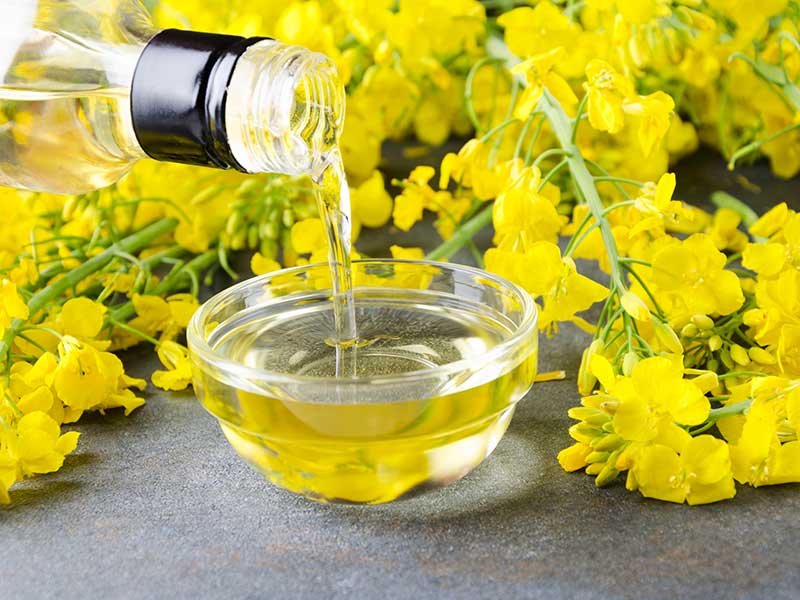
The final option on the list is canola oil, which will save you from health issues related to overconsumption of saturated fats, such as stroke and heart disease. It has the lowest amount of saturated fats compared to other types of oil, which makes it the healthiest choice.
In terms of the smoke point, this vegetable-based may not be as impressive as others like avocado oil, olive oil, or peanut oil. However, canola oil is still a good choice for cooking steak, smoking at 400°F (205°C) and boasting a neutral flavor.
Its reasonable prices are also a great point compared to other oils. For good and not-so-expensive products, you can look at Healthy Harvest Canola Oil.
Apart from using it for cooking, canola oil has a variety of uses. Many manufacturers use it to produce eco-friendly inks, soaps, cosmetics, etc. There are also renewable fuels made from canola oil to contribute to footprint emission reduction.
Despite its cooking and health benefits, there are some concerns about canola oil. The majority of canola crops grown in North America are genetically modified to produce better oil quality and resist pesticides. In other words, most canola oil products are made from GMO crops.
As a result, many people may feel uncertain or unsafe about using this oil. The concern is understandable. However, many studies have shown that such products do not lead to any health issues. So, you don’t need to cut down on canola oil in your diet.
The Worst Oils You Should Avoid

While there are still other viable options, here are some you should keep away from because of health concerns.
Caption: You may not want to use a great amount of coconut oil due to health concerns.
Palm Oil and Coconut Oil
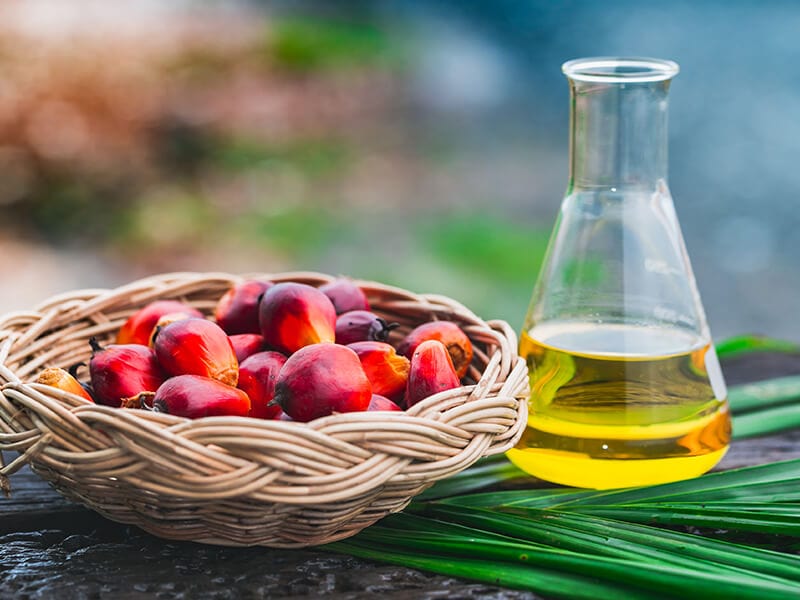
Palm oil contains 50% of saturated fat, while the figure for coconut oil is about 90%. Due to their saturated fat amount, using both of them for cooking may lead to increased “bad” cholesterol levels and risks of heart disease (3).
Apart from health issues, palm oil production also has had a bad reputation for the environment. Large areas of tropical forests have been removed to make room for oil palm plantations, contributing to deforestation, climate change, and habitat loss of endangered species.
Look at how palm oil production may impact the environment.
Partially Hydrogenated Oil

People create partially hydrogenated oil by infusing liquid fats with hydrogen. It is a common ingredient in frozen pizzas, cookies, French fries, etc. In the food industry, this oil is used as a preservative agent to keep food from spoiling.
Due to its large amount of artificial trans fat, this oil can reduce “good” cholesterol levels while raising those of “bad” cholesterol. As a result, it may lead to dangerous diseases, such as stroke and heart disease.
Partially hydrogenated oil intake also increases the risk of type 2 diabetes for people who consume it frequently. The reason is that it can cause insulin resistance, which consequently impacts the body’s function to regulate blood sugar levels.
How To Cook The Perfect Steak With Oil
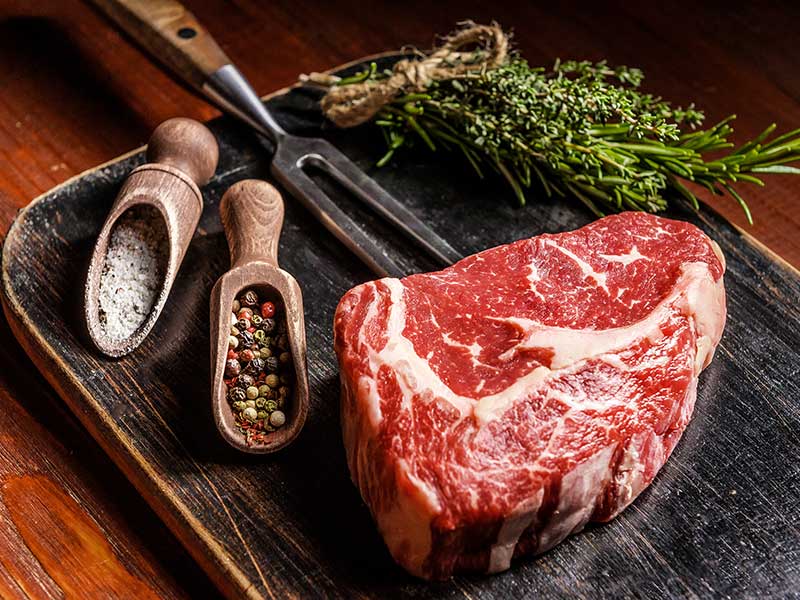
Now, it is time for you to practice cooking your steak with the oils I mentioned. There are 4 steps in cooking steak, beginning with preparing the necessary ingredients and ending with resting the steak.
Step 1. Preparation
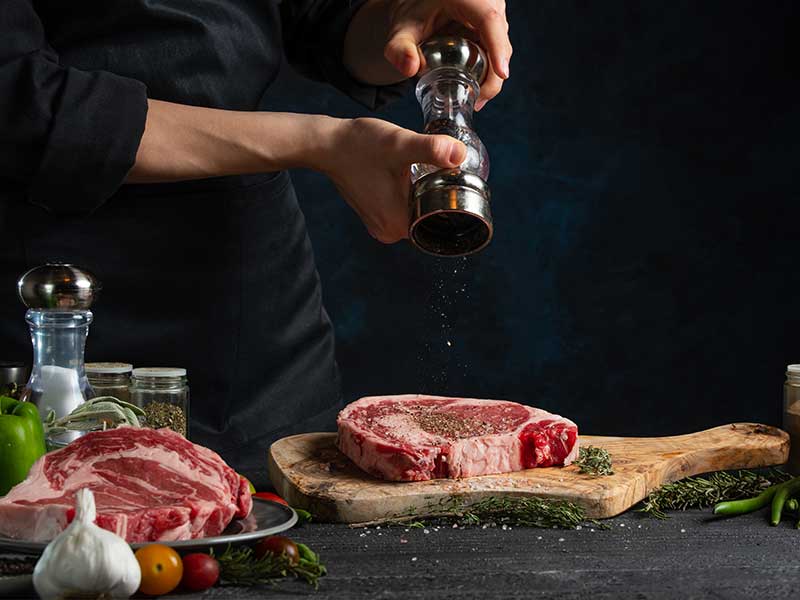
Besides selecting the best oils, choosing the right ingredients is also very important. When it comes to a high-quality steak, you should choose a moist cut of meat with good colors (pink with a touch of red)
If you want to use a frozen steak, thaw it properly first. After that, you should rub your steak with some oil, salt, and pepper. You can also add other spices or flavors during this time or during cooking.
Step 2. Heating The Frying Pan
Before starting to cook, you need to heat your frying pan thoroughly first. This is a necessary step for ensuring the flavor of the steak later. Don’t forget to use the oils that I recommended!
Step 3. Cooking The Steak
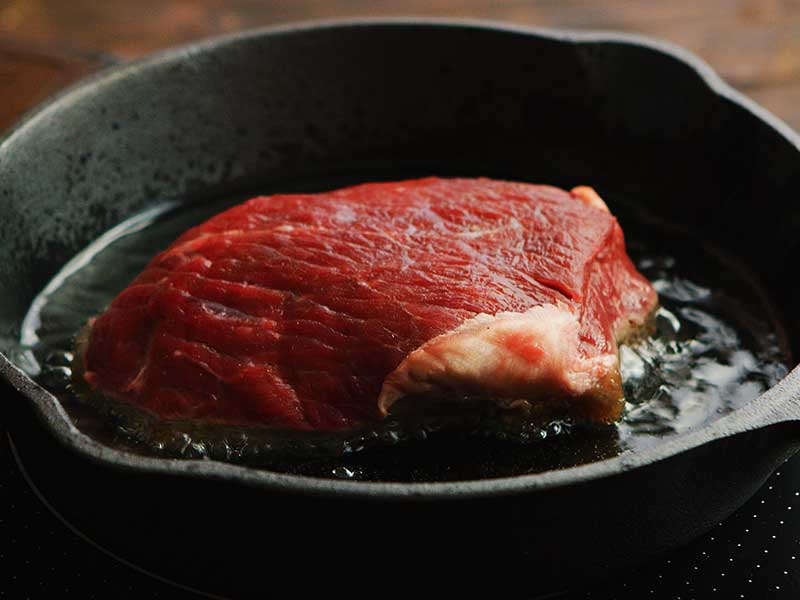
As the pan is very hot, you should put the steak on and cook it until it gets a brown crust. Then, you flip the steak every minute and do the same thing to make sure both sides form brown crusts.
Step 4. Knowing When The Steak Is Done
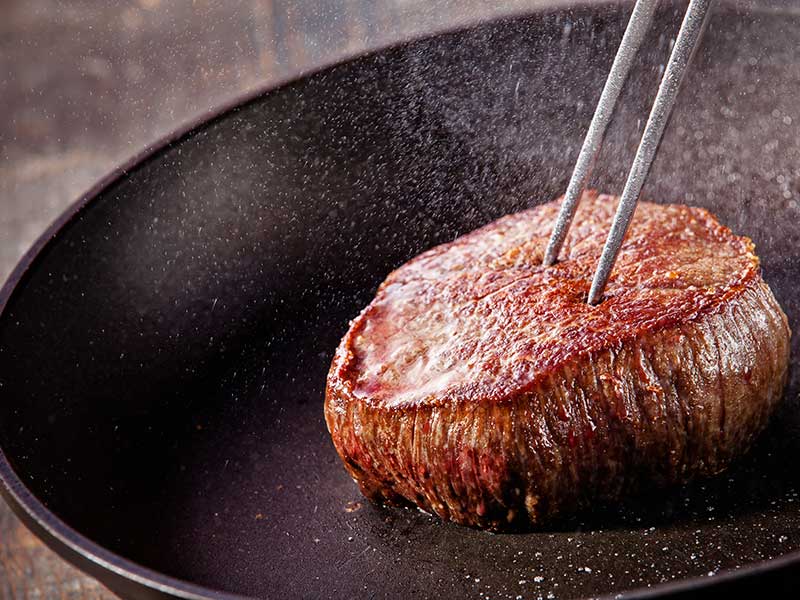
But how long should you cook the steak? Well, cooking time depends on the thickness and doneness of the steak and the temperature.
For example, a rare or medium-rare steak is done for about 2 – 3 minutes at 400°F on each side, while the figure for a well-done steak is around 6 minutes.
You can poke your steak with a fork, chopsticks, or whatever to check if it is ready. If it feels soft and tender, you can turn off the heat and remove it from the pan.
Step 5. Waiting For Some Minutes Before Cutting
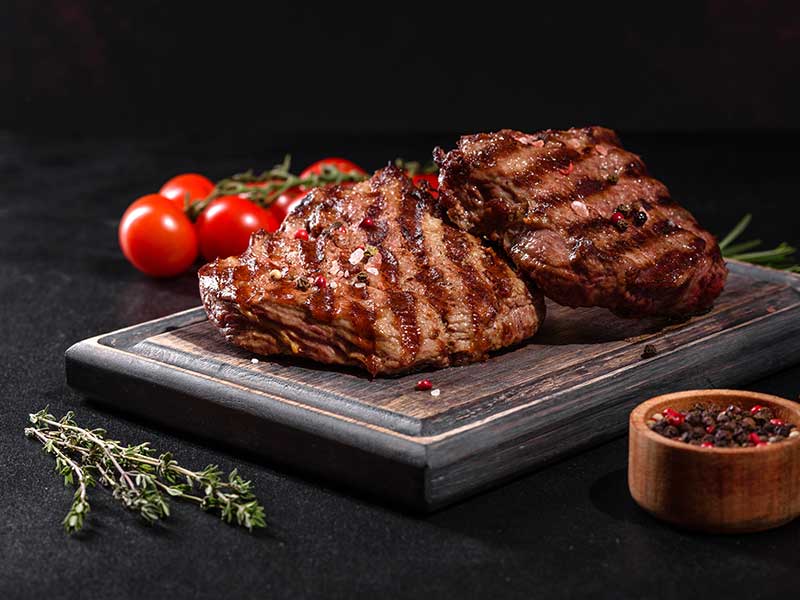
At this moment, your steak looks so delicious that you may want to try it immediately. However, the best thing to do is to leave it on the dish for about 5 minutes. This will allow the juices to soak into the steak instead of dripping away. As a result, your steak will be tender and flavorful.
Learn how to cook steak like a chef with this thorough guide.
3 Mistakes People Often Make When Cooking Steak With Oil
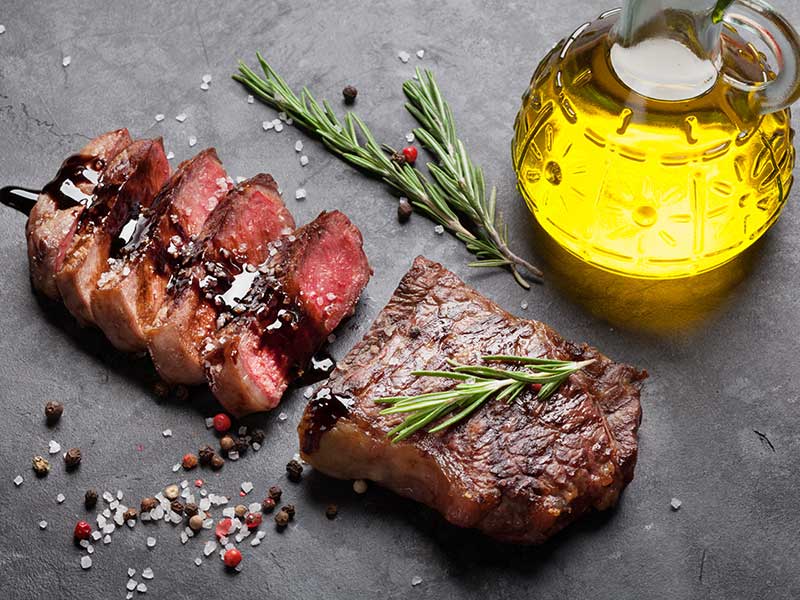
When it comes to cooking steak with oil, many mistakes can occur, especially for those who are inexperienced.
1. Using Oils With Low Smoke Points
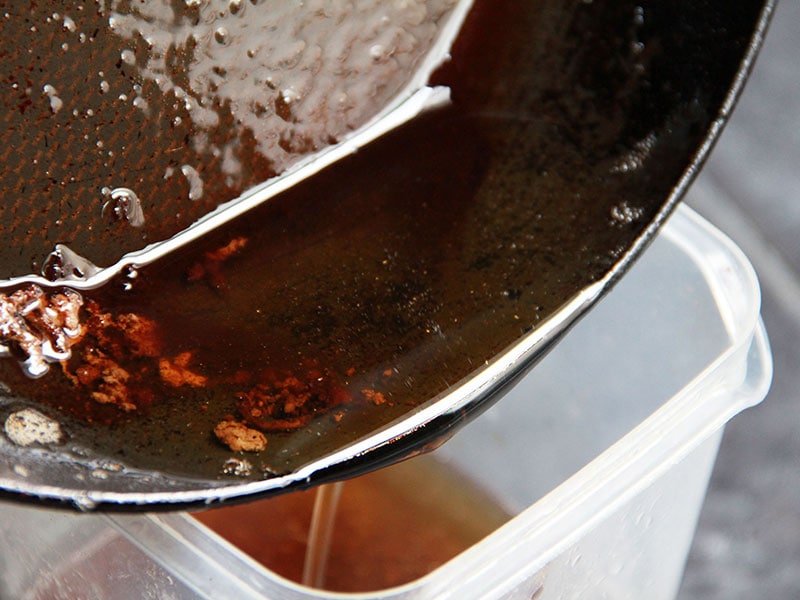
As I mentioned before, while many oils can be used well in everyday cooking, not all of them are suitable for cooking steak. Low-smoke point oils will be burnt quickly before your steak is ready to eat.
2. Using Oils With Strong Flavors
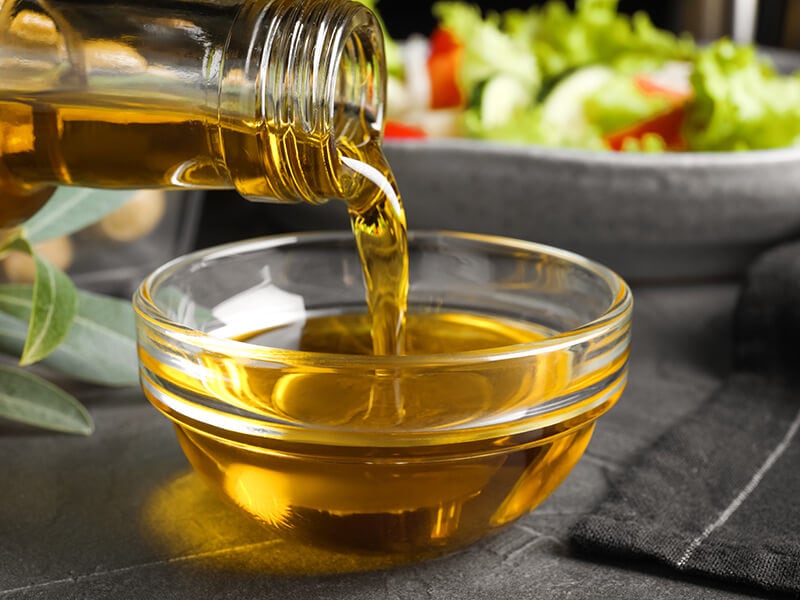
This may depend on people’s preferences. However, cooking steak with strong flavor oils is not a good idea. Such oils are likely to change the flavor of the steak and may make it not as desired as people expected.
3. Using Too Much Oil
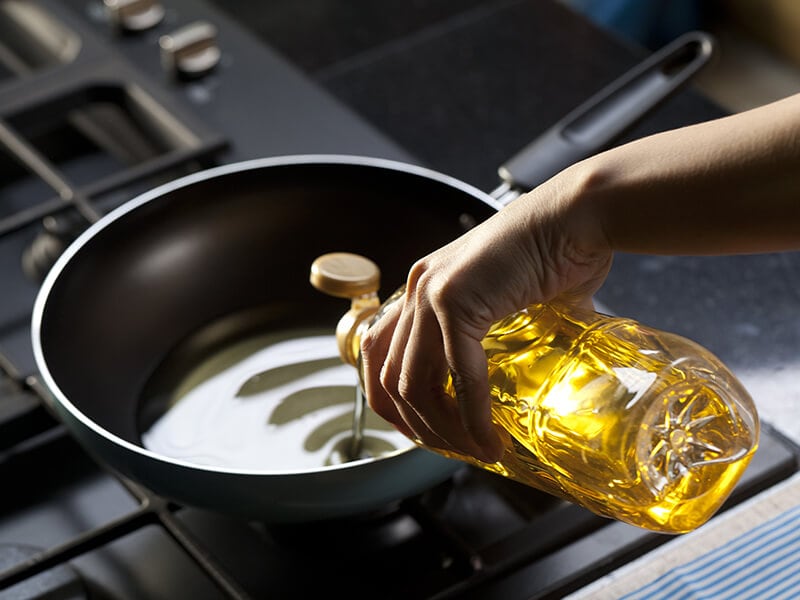
Excessive oil in the steak can cause some health issues, such as heart attack, stroke, diabetes, etc. In addition, too much oil also makes the steak greasy and unappealing to eat. To avoid that scenario, you only need to use about 1-2 teaspoons of oil.
10 things you wish to know before cooking steak.
FAQs
Here are some questions about cooking steak with oil that you may want to ask.
Find Your Best Oils To Perfect Your Steak!
Everyone has their own preference. Sometimes, even high-quality oils with exorbitant price tags may not create your desired steak flavor. Each time you try and fail, take notes and rate the oils according to your experience. You will find your best oils for cooking steak soon.
At this time, you grasp all the knowledge about the best oils for cooking steak. There are tips and tricks to help you practice your cooking as well. If you find the article useful and knowledgeable, leave your comments and share the post with your friends.
References
- Smoke point (no date) smoke point | NAL Agricultural Thesaurus.
- Center for Food Safety and Applied Nutrition (no date) Food allergen labeling and consumer protection act of 2004, U.S. Food and Drug Administration. FDA.
- Fats (no date) Fats | ADA.

